
|
|
|
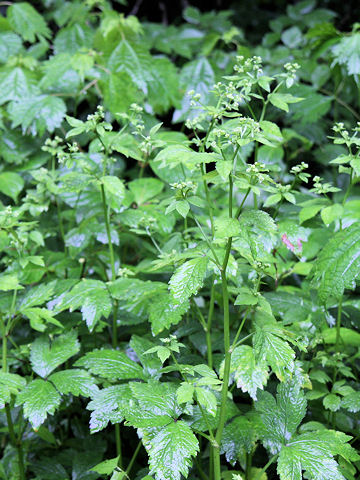 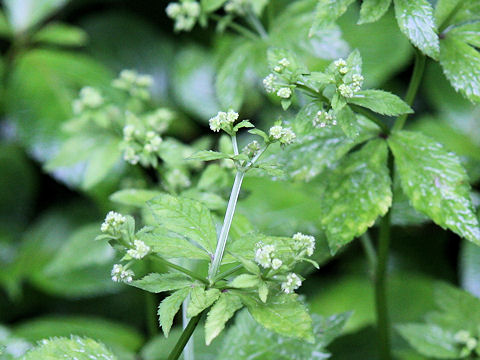 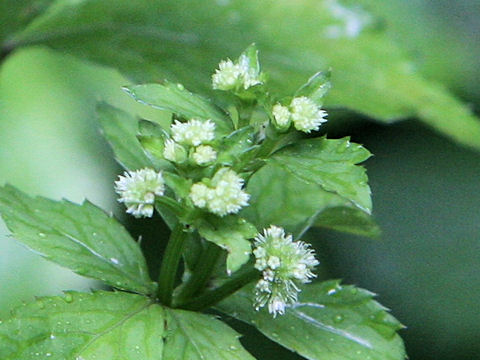 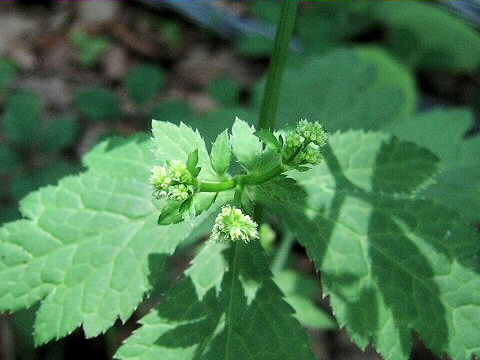 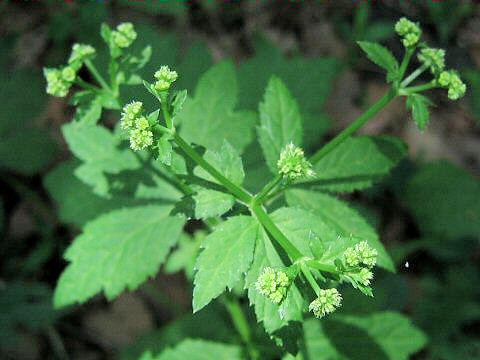 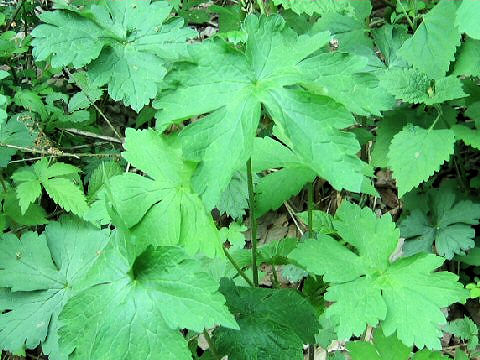 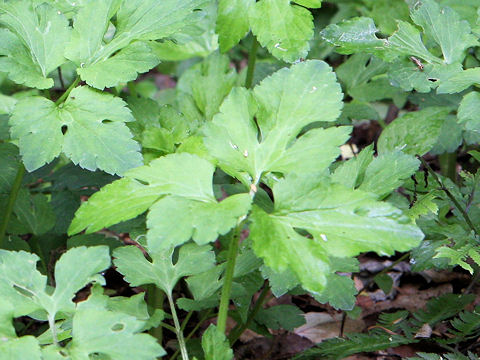 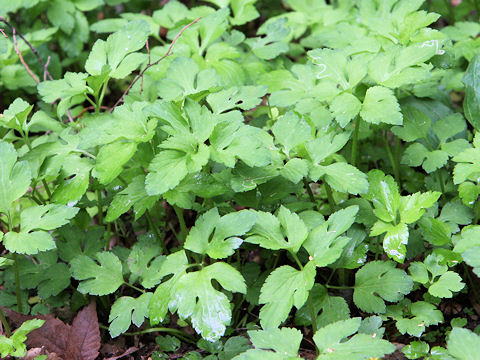 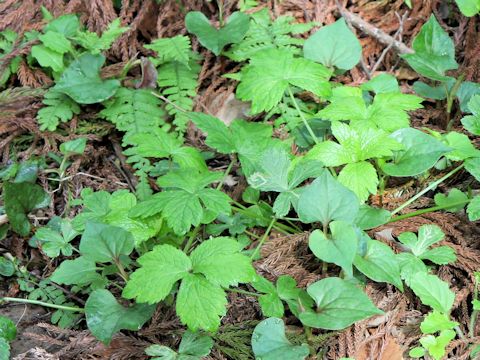 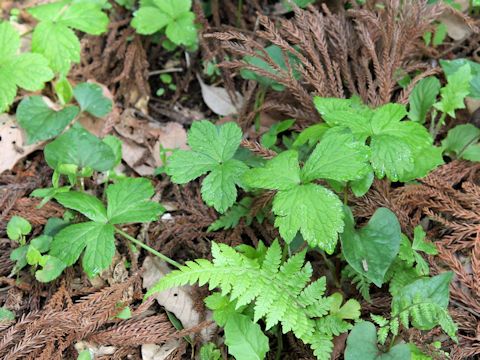 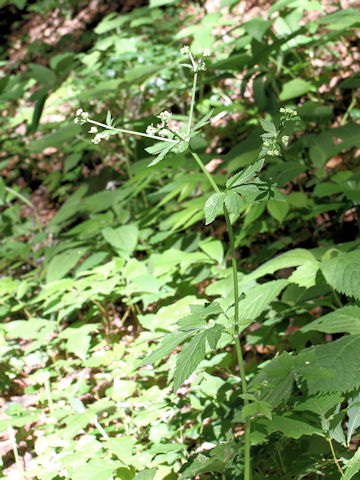 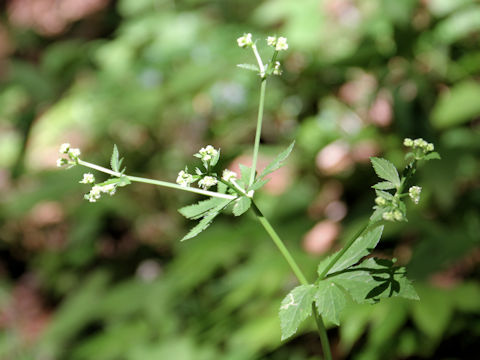 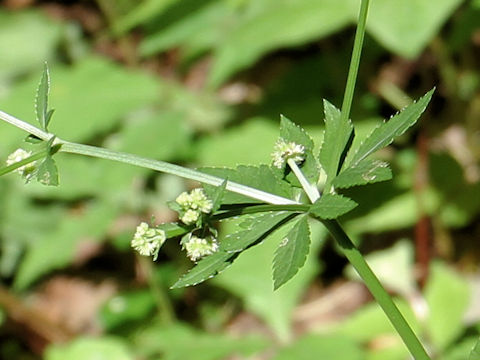 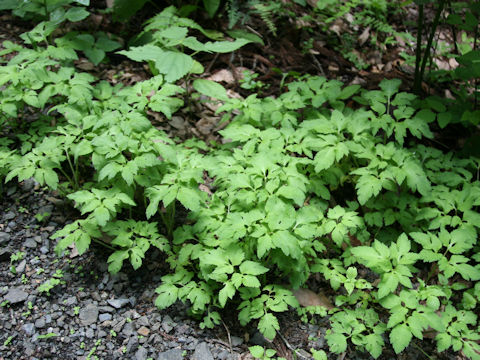 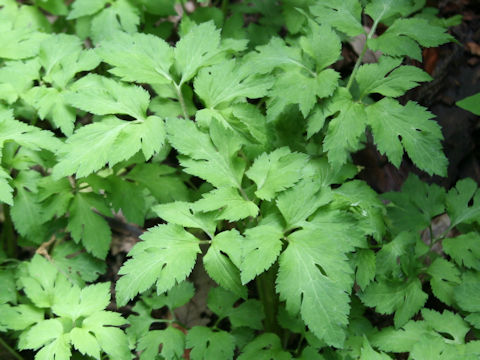 |
|
|
|
わが国の各地をはじめ、朝鮮半島や中国に分布しています。山野の林内に生え、高さは50〜60センチほどになります。根生葉は、3全裂し、側裂片はさらに2裂して、長い葉柄があります。茎葉の葉柄は下部で長く、上部では短いものです。7月から9月ごろ、茎先の複散形花序に白い花を咲かせます。和名は、食用にはならず、馬に食べさせるくらいのものだということから。中国語では「変豆菜(bian dou cai)」と呼ばれます。 |
|
|
セリ科ウマノミツバ属の多年草で、学名は Sanicula chinensis。英名はありません。 |
|
|
The "Umano-mitsuba" (Sanicula chinensis) belongs to Apiaceae (the Carrot family). It is a perennial herb that is native to Japan, as well as the Korean Peninsula and China. This herb grows in forest edges and can reach 50-60 cm in height. The basal leaves are tri-dissected and the lobes are bilobat. They have long petioles. The componud umbels are borne on the terminal stems and bloom white flowers from July to September. The Japanese name "Umano-mitsuba" (horse mitsuba) comes from the fact that it is not edible and is only fed to horses. In Chinese, it is called "変豆菜" (bian dou cai). |
|
|
[上・中1〜2] 山形県小国町小玉川「温身平」にて、2008年07月12日撮影。 [中3・中4] 岐阜県高山市国府町宇津江にて、2005年06月26日撮影。 [中5] 長野県松本市「内田少年の森」にて、2005年05月21日撮影。 [中6・中7] 群馬県安中市松井田町「小根山森林公園」にて、2009年05月24日撮影。 [中8・中9] 千葉県香取市仁良にて、2012年04月30日撮影。 [中10〜中12] 秋田県仙北市「水沢温泉郷」にて、2019年07月10日撮影。 [中13・下] 宮城県大河原町大谷「大河原昆虫公園」にて、2024年06月05日撮影。 |

|
|
Shu Suehiro |